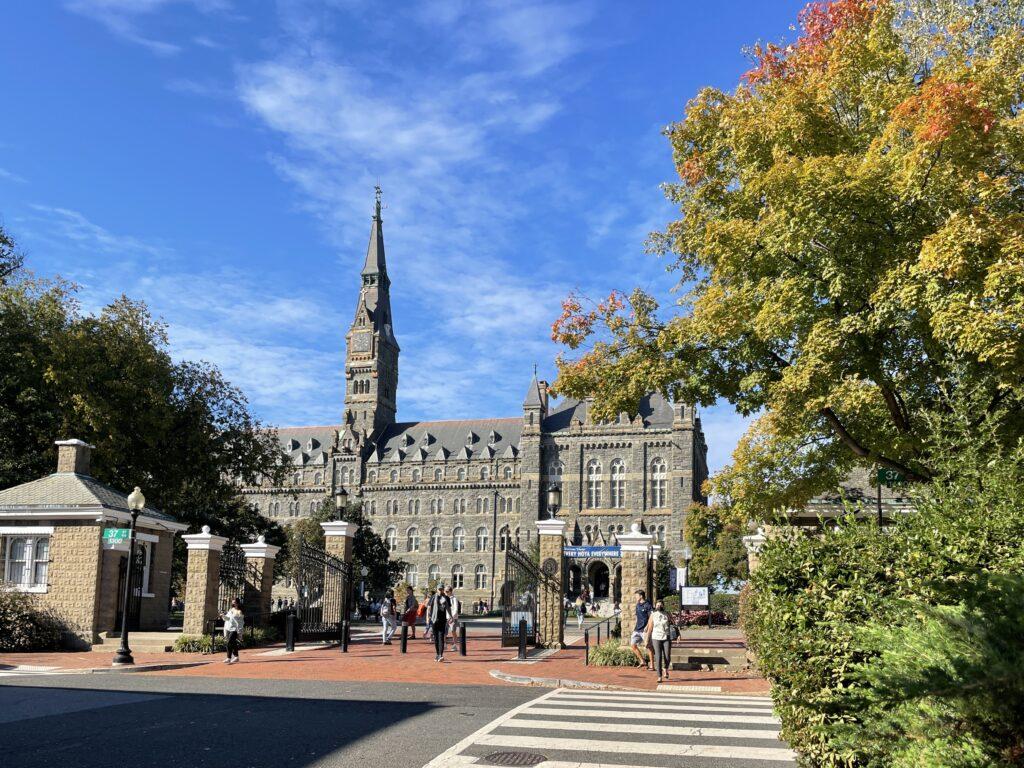Georgetown University announced plans to raise its undergraduate tuition by 3.5%, increasing the cost from $59,784 to $61,872 for the 2022-23 academic year.
The university notified students about the annual tuition increase in a Feb. 14 email from Provost Robert Groves. In accordance with the higher tuition cost, the total cost of attendance will increase by approximately 3.3%, citing inflation, the COVID-19 pandemic and providing more resources for academics and student programs as the reason for the increase.
The tuition increase was unnecessary, and the university should look toward alternative means of funding its operations, according to Georgetown University Student Association (GUSA) Senate Speaker Leo Rassieur (COL ’22).

“I understand that the university is going through some hard times financially and that inflation has impacted everyone in this country,” Rassieur said in an interview with The Hoya. “But I also know that the university’s top executives are paid obscenely large amounts of money and that the university is looking for ways to cover those costs. Maybe they should start looking at the salary of their top executives, not at the pockets of low-income students who are already struggling to pay tuition.”
The tuition increase will hurt low-income students, especially those who rely on external scholarships — for which the university only takes off $3,000 maximum from a student’s family contribution — to help cover the cost of tuition, according to GUSA President Nile Blass (COL ’22).
“It’s going to negatively impact a lot of students who have outside scholarships because of the way Georgetown calculates aid,” Blass said in an interview with The Hoya. “This just seems like creating a bigger chasm between how students, especially those with aid, are going to be able to meaningfully support themselves and to maintain some level of stability in the academic environment.”
The university aims to minimize the amount by which tuition increases every year, while taking into account economic conditions that impact the school’s finances, according to a university spokesperson.
“Difficult decisions have to be made with regard to providing for our students, updating infrastructure, improving teaching practices and meeting growing student services-based needs,” the spokesperson wrote in an email to The Hoya. “Balancing these competing demands is an ongoing process and includes consideration of the rising costs of providing services and attracting strong faculty.”
For the 2021-22 academic year, the total cost of attendance increased by 4% from the previous year, while tuition increased by 3.5% for the 2020-21 academic year.
The projected distribution of undergraduate expenses for fiscal year 2023 includes 30% of tuition dollars allocated to instruction and 21% of tuition dollars allocated to financial aid, according to the Feb. 14 email.
GUSA will meet with various university organizations, like the Georgetown Scholars Program (GSP), which provides support for first-generation and low-income (FGLI) students at Georgetown, to gain a better understanding of how the tuition increase will affect different communities before meeting with the administration, according to Blass.
During the fall 2020 and spring 2021 semesters, which took place online, the university instituted a 10% tuition discount for all undergraduate students. Despite beginning the spring 2022 semester virtually, students were not given a discount.
The university currently has no plans for offering tuition refunds for the spring 2022 semester, according to Rassieur, but will reconsider if the university goes back to virtual learning.
The tuition increase announcement itself is a significant source of stress for the student body, Rassieur said.
“It’s really worrying to me,” Rassieur said. “I know a lot of students who saw that announcement and are already having very tense conversations with their family, their parents to see how we’re going to be able to adjust to this and how this is going to impact us.”




















